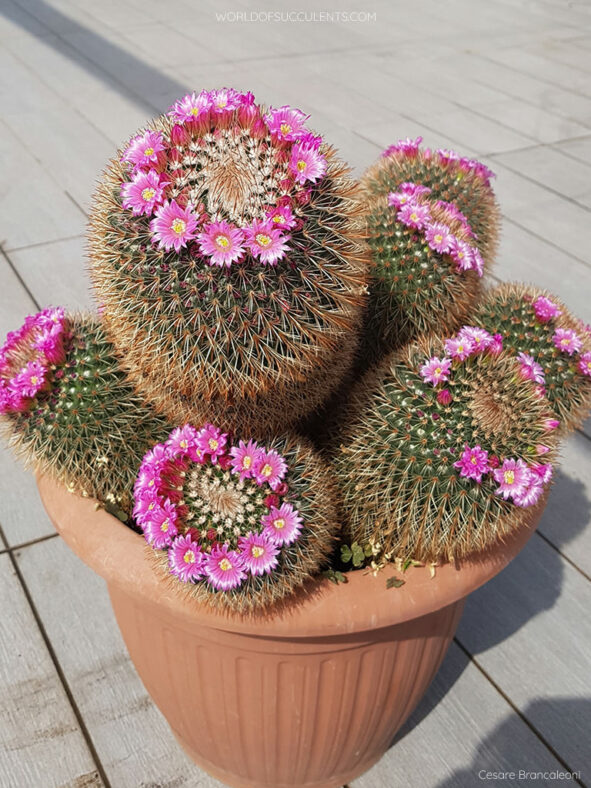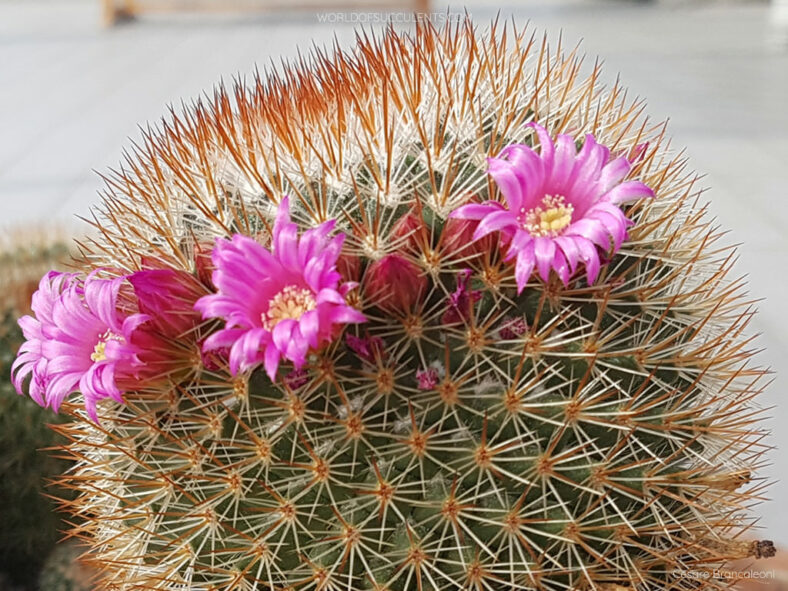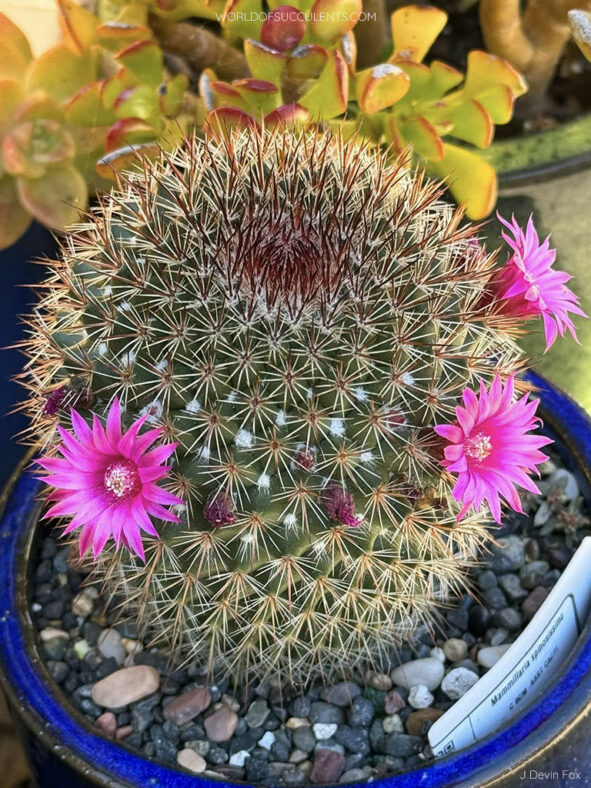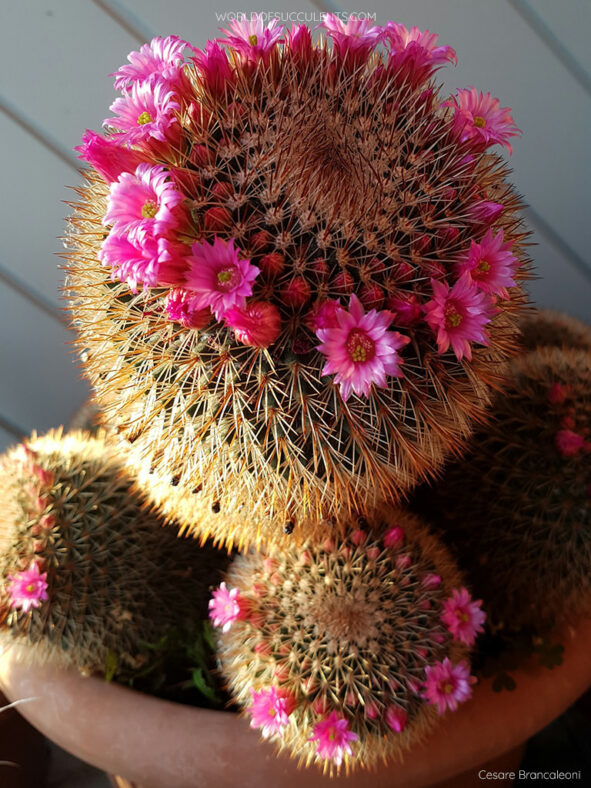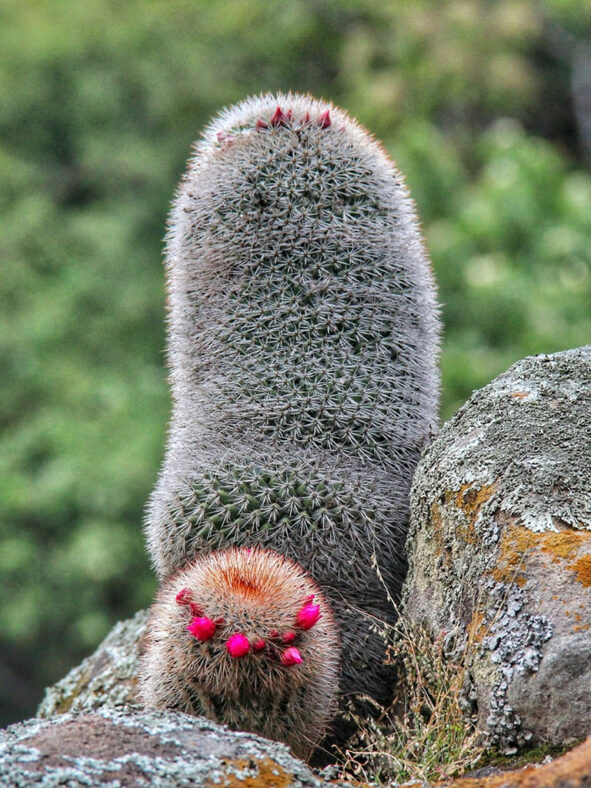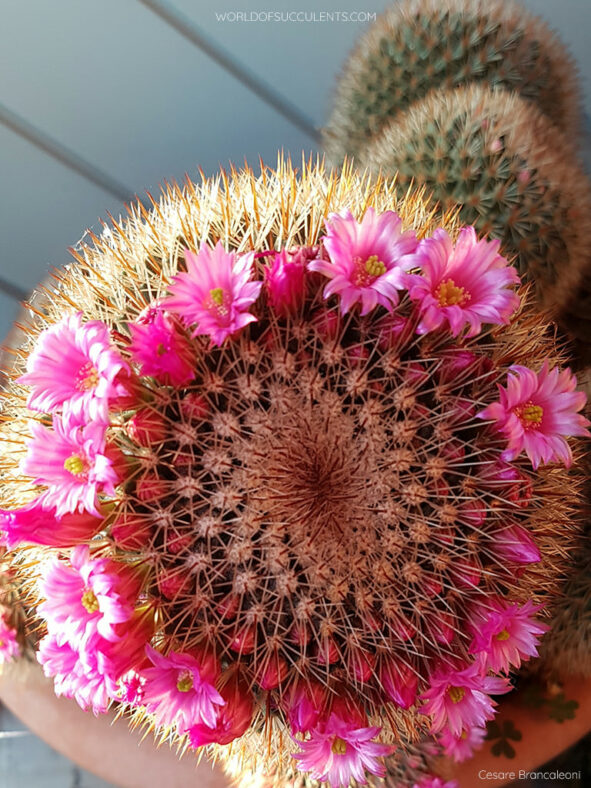According to Nathaniel Lord Britton (1859-1934) and Joseph Nelson Rose (1862-1928), Mammillaria spinosissima has been cultivated since at least 1835.
Scientific Name
Mammillaria spinosissima Lem.
Common Name(s)
Spiny Pincushion Cactus
Synonym(s)
Cactus spinosissimus, Mammillaria spinosissima subsp. spinosissima, Neomammillaria spinosissima
Scientific Classification
Family: Cactaceae
Subfamily: Cactoideae
Tribe: Cacteae
Subtribe: Cactinae
Genus: Mammillaria
Etymology
The specific epithet "spinosissima" (pronounced "spin-oh-SIS-ee-muh") means "most spiny, spiniest" and refers to the stems of this species, which are densely covered with spines.
Origin
Mammillaria spinosissima is endemic to Mexico. It grows in tropical dry forests and xerophilous scrub at elevations between 5,250 and 6,230 feet (1,600 and 1,900 m) in Guerrero, Morelos, and the State of Mexico.
Description
Mammillaria spinosissima is a small cactus with cylindrical, dark blue-green stems with short tubercles, each with a dense cluster of spines at the tip, almost completely hiding the stem. The stems can grow up to 12 inches (30 cm) tall, rarely up to 20 inches (50 cm), and can reach a diameter of 4 inches (10 cm). At first, the plant grows solitary, but later, it produces offsets at the base, forming a clump over time. Each areole bears 4 to 15 central and 20 to 26 radial spines. The radial spines are straight and vary in color from white and yellow to deep reddish-brown, measuring up to 0.4 inches (1 cm) in length. The central spines are stouter than the radial spines and vary in color from reddish and pinkish-brown to yellowish, measuring up to 0.8 inches (2 cm) in length.
In spring, Mammillaria spinosissima produces flowers that form a ring around the top of the stem. The flowers are purplish or deep pink, and can reach a length of 0.8 inches (2 cm) and a diameter of 0.6 inches (1.5 cm). The fruits are club-shaped, greenish to dull purple, and contain reddish-brown seeds. They can grow up to 0.8 inches (2 cm) long.
Subspecies and Cultivars of Mammillaria spinosissima
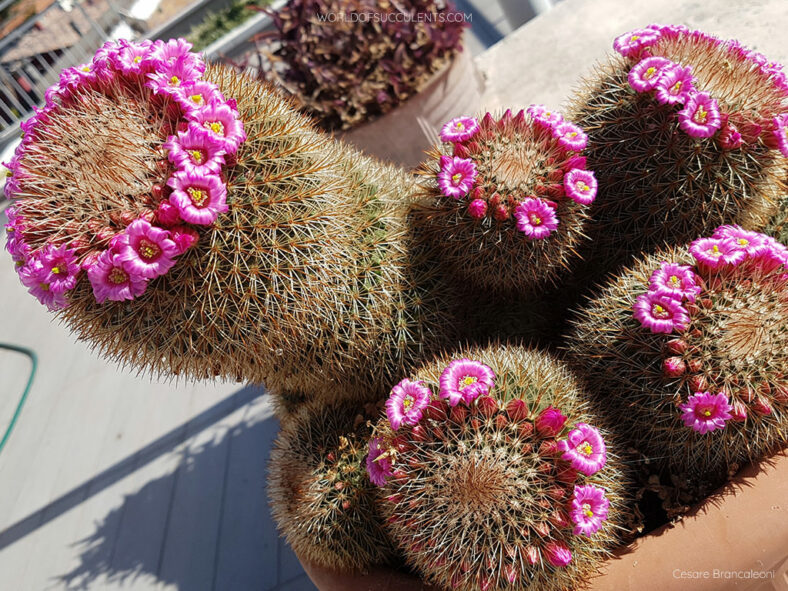
How to Grow and Care for Mammillaria spinosissima
Light: For optimal growth of your Mammillaria spinosissima, ensure it is planted in an area that receives at least four hours of direct sunlight daily. If growing indoors, placing the cactus near a bright window is best to ensure it gets enough light. It is advisable to keep it on the balcony or in the garden from spring to fall for additional light.
Soil: Use commercial cactus soil or create your own well-draining soil mix to ensure good root aeration and drainage.
Temperature: Mammillaria spinosissima is heat-tolerant but is not a cold-hardy plant. It grows best in USDA Plant Hardiness Zones 9a to 11b, with average minimum winter temperatures ranging from 20°F to 50°F (-6.7°C to 10°C).
Watering: Water deeply from spring to fall, and wait until the soil dries out before watering again. Never let your pot sit in water, and suspend watering when the plant goes dormant in the winter.
Fertilizing: Mammillaria spinosissima benefits from fertilizing during the growing season. Apply a water-soluble fertilizer for cacti and succulents. Suspend feeding during the winter when the plant goes dormant.
Repotting: Repot the cactus into a slightly larger pot every two or three years, preferably in late winter or early spring. However, repotting can be done at any time of the year.
Propagation: There are two easy ways to propagate Mammillaria spinosissima: by seeds or by dividing offsets. The best time to remove offsets is in spring and summer. Sow the seeds in late spring or summer for the best results.
Learn more at How to Grow and Care for Mammillaria.
Toxicity of Mammillaria spinosissima
Mammillaria spinosissima is non-toxic but has sharp spines, so keep it away from children and pets.
Links
- Back to genus Mammillaria
- Succupedia: Browse succulents by Scientific Name, Common Name, Genus, Family, USDA Hardiness Zone, Origin, or cacti by Genus
Photo Gallery
Click on a photo to see a larger version.
